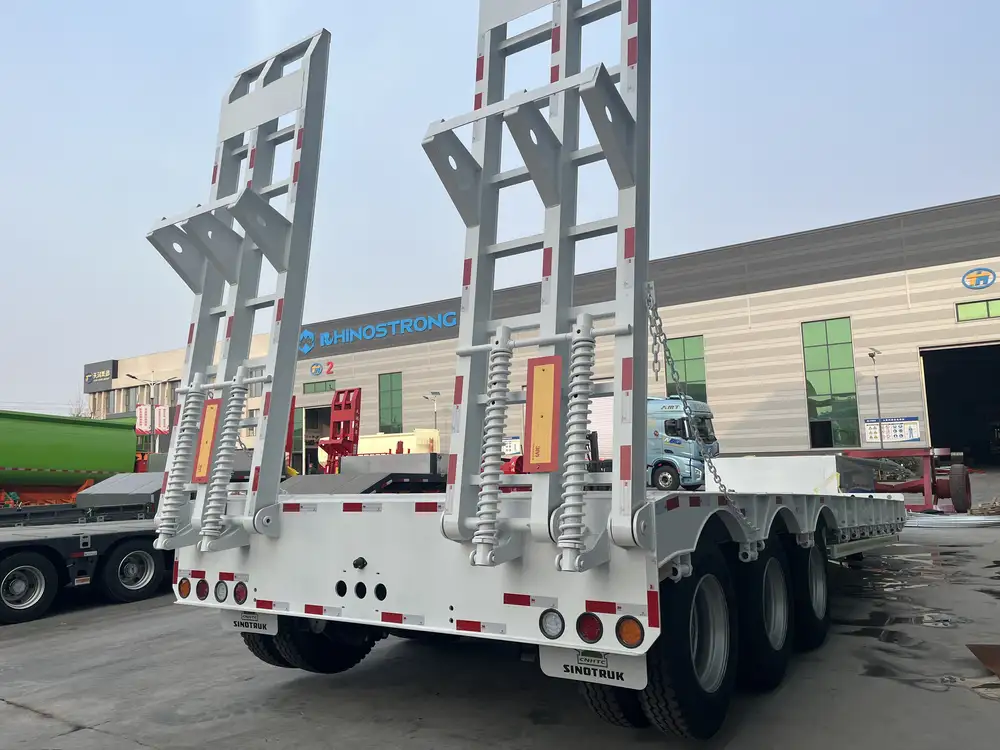When contemplating the logistics and transportation industry, the dimensions of the vehicles involved play a critical role. One of the most significant factors to consider is the size of the semi-trailer. Understanding how long an average semi-trailer is can have profound implications for operations in shipping, freight management, and highway regulations. This article delves into the dimensions, regulations, and variations that dictate semi-trailer lengths, ensuring readers have a detailed understanding of the topic.
The Standard Length of Semi-Trailers
In the United States, the standard length of a semi-trailer commonly ranges from 28 feet to 53 feet. This variation is dictated by the type of cargo transported, the preferences of freight companies, and safety regulations. Below, we explore the typical lengths and their applications:
| Trailer Type | Common Lengths | Uses |
|---|---|---|
| Standard Dry Van | 53 feet | Transportation of general freight |
| Reefer Trailers | 40 to 53 feet | Refrigerated goods |
| Flatbed Trailers | 48 to 53 feet | Heavy machinery, building materials |
| Step Deck Trailers (Lowboy) | 48 to 53 feet | Over-dimensional freight |
| Tanker Trailers | 40 to 60 feet | Liquid bulk cargo |
| Car Carriers | 48 to 53 feet | Transportation of vehicles |
| Specialty Trailers | Varies (up to 60 feet) | Niche products like mobile homes or large equipment |
Regulatory Limitations
While these are common sizes, it’s crucial to recognize that each state governs its roadway limits, impacting the length of semi-trailers allowed for use on particular roads. The Federal Highway Administration sets certain standards, but local laws can vary significantly.
- Federal Regulations: Typically, federal law allows for a maximum trailer length of 53 feet for semi-trucks traveling on interstate highways.
- State Regulations: Certain states allow for longer trailers, especially in cases involving specialized vehicles (like double trailers), which can measure up to 65 feet or more.

Length Variations Across Different Types of Semi-Trailers
Standard Containers
The most common form of semi-trailer is, undoubtedly, the standard dry van, measuring 53 feet in length. This spacious design accommodates a large volume of cargo, generally up to 26 pallets or 10,000 – 30,000 pounds, making it suitable for a wide range of industries such as retail and e-commerce.
Refrigerated Trailers
Reefer trailers, essential for transporting perishable goods, usually come in lengths of 40 to 53 feet. The ability to maintain temperature during transit allows these trailers to be invaluable for the food and pharmaceutical industries.

Specialized Trailers
For specialized transportation needs, semi-trailers can extend beyond the typical lengths. Flatbed trailers can vary from 48 to 53 feet, accommodating oversized loads. Tank trailers, used for transporting liquids, often fall within the range of 40 to 60 feet and require stringent safety measures.
Extending to the Limit
The need for flexibility in transportation has led to the introduction of extendable trailers that can adjust in length. The benefits include:
- Adaptability: These trailers can be modified to fit different cargo sizes, minimizing the need for multiple units.
- Cost Efficiency: By optimizing space and reducing the number of trips, companies can save significantly on transportation costs.
Why the Length of Semi-Trailers Matters
Understanding the average length of semi-trailers is not merely a technical detail—it is vital for operational efficiency and compliance with road safety regulations. Here are several reasons why this knowledge is paramount:

Maximizing Freight Efficiency
Freight companies are under constant pressure to maximize cargo loads while minimizing transportation costs. Knowing the maximum allowable dimensions allows shippers to optimize loading configurations, manage inventory effectively, and adhere to weight limits.
Complying with Safety Regulations
Regulations are put in place for a reason: safety. Knowing how long a semi-trailer can be helps trucking companies navigate varied laws across states and regions, ensuring safe travels and avoiding costly fines.
Impact on Road Infrastructure
The length of semi-trailers can also have broader implications for road design and infrastructure. Roads, bridges, and tunnels must accommodate these vehicles, and longer trailers can necessitate modifications to existing structures to ensure safe passage.

Environmental Considerations
Transport length has implications for fuel efficiency. The longer the trailer, the more fuel it consumes—an aspect increasingly relevant in the face of rising environmental awareness and regulations on emissions.
The Pros and Cons of Longer Semi-Trailers
Longer semi-trailers offer a range of advantages as well as some drawbacks that must be weighed carefully.
Advantages:
- Increased Cargo Capacity: A longer trailer allows for more cargo to be transported at once.
- Reduced Trips: Fewer trips mean reduced operational costs, saving on fuel and driver wages.
- Logistical Efficiency: Streamlined loading and unloading processes can be achieved with a single, larger trailer.

Disadvantages:
- Maneuverability Challenges: Longer trailers can be more challenging to maneuver, particularly in urban areas or tight spaces.
- Increased Wear on Infrastructure: Heavier, longer vehicles can accelerate wear and tear on roads and bridges.
- Compliance Complexity: Ensuring compliance with various regulations can lead to increased administrative overhead.
Conclusion: The Importance of Understanding Semi-Trailer Lengths
Grasping the complexities surrounding semi-trailer lengths not only enhances operational efficiency but also plays a role in regulatory compliance, cost management, and improved safety on our roads. By recognizing the variations in lengths, advantages, and potential challenges, stakeholders in the logistics and transportation industries can make informed decisions that optimize their operations.
Ultimately, whether you’re a freight company, a manufacturer, or someone involved in transport logistics, having a nuanced understanding of “how long is your average semi-trailer” can lead to smarter, more effective business practices and a safer operational environment.
Engage with us to explore custom semi-trailer solutions tailored to your needs. Ensuring compliance, efficiency, and safety is our mission as industry leaders in manufacturing and logistics. Whether you seek standard trailers or specialized solutions, we’ve got you covered!



